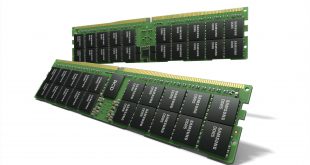With memory modules of this calibre, it is fair to assume that a large proportion of the user base will be looking for the kit's highest attainable frequency with good enough stability. That doesn't mean that the ability for the overclocked kit to run every benchmark with stability is crucial, but it does place an importance on being able to boot and run at least one test flawlessly.
We will be tweaking the base clock to fine-tune the memory overclock. Due to the above point, and the fact that the processor frequency will be different to when the RAM was running at stock speeds, there is little point in showing comparison benchmarks. Instead, we will use a single run of Super Pi 16M to verify stability.
We opted for the 1.25x CPU strap so that we could use a BCLK around the 125MHz-mark for our overclocking attempts. The 1.00x CPU strap would require the maximum Haswell multiplier and a high base clock to get us past 3150MHz DRAM frequency.
To eliminate base clock bottlenecks, we used a number of increased voltages for the CPU and system. The CPU multiplier was dropped to a near-stock level with each increase in the base clock.
To aid our memory overclocking efforts, we increased the CPU I/O Digital and Analogue voltages to 1.300V, DRAM voltage to 1.700V, VTDDR voltage to 0.825V, and System Agent voltage to 1.200V.
Timings were loosened to 14-15-15-40-2T and DRAM power settings were tweaked.
The highest Super Pi 16M-stable memory overclock that we achieved with the Avexir Core Extreme Series memory modules was 3192MHz. This consisted of a 133MHz base clock, 100:133 BCLK:DRAM frequency ratio, and an 18x memory divider.
We wouldn't call this a 24/7 stable overclock with our settings, although a little voltage tweaking (with better cooling, perhaps) would have garnered improved stability.
We did actually manage a maximum bootable memory frequency of 3240MHz using a 135MHz base clock. As confirmed by Super Pi rounding errors, this setting was clearly unstable though, and very reluctant to boot into Windows on times. 3240MHz using a 162MHz base clock was not possible, although this could be related to our 4770K chip's overclocking capacity.
Our validation running at a 3192MHz DRAM frequency can be viewed here.
 KitGuru KitGuru.net – Tech News | Hardware News | Hardware Reviews | IOS | Mobile | Gaming | Graphics Cards
KitGuru KitGuru.net – Tech News | Hardware News | Hardware Reviews | IOS | Mobile | Gaming | Graphics Cards












